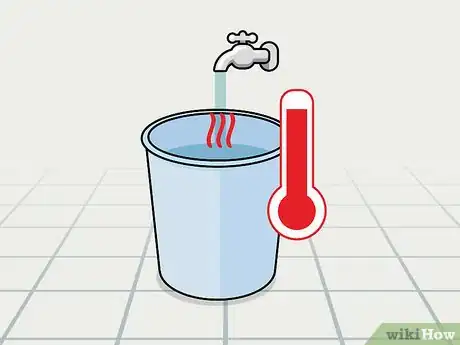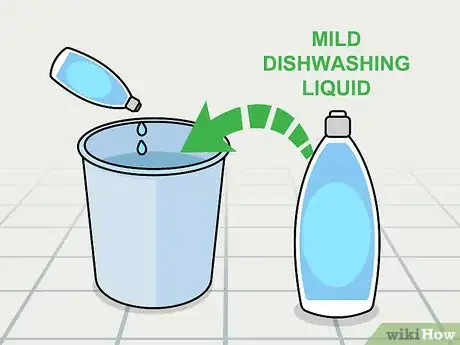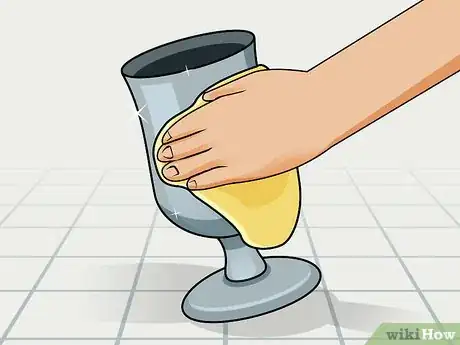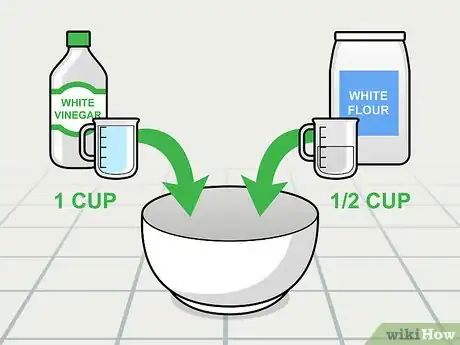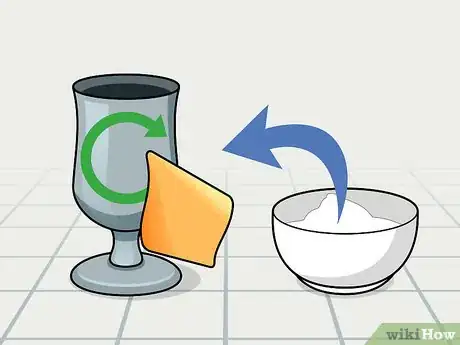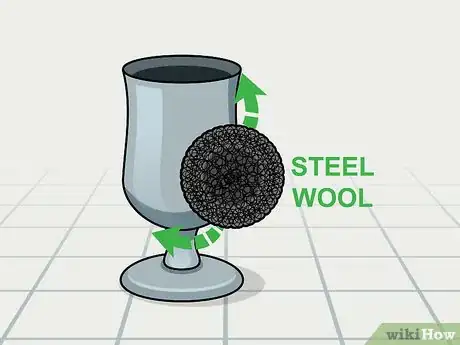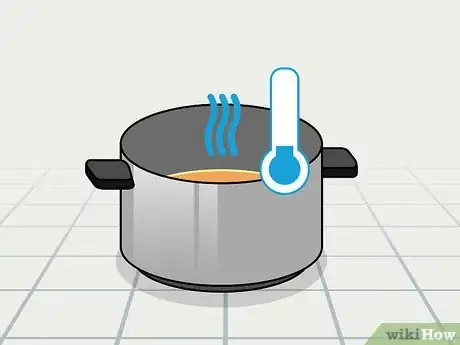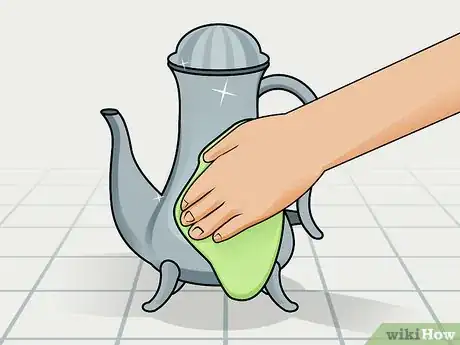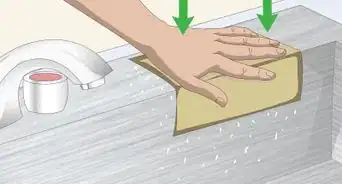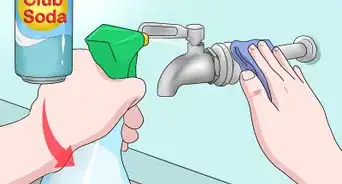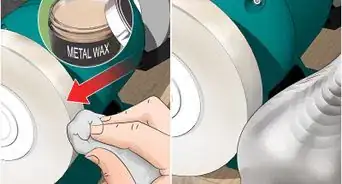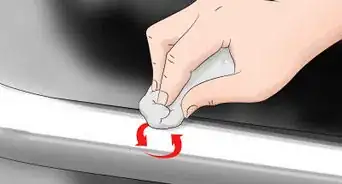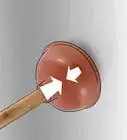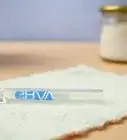This article was co-authored by Guy Peters. Guy Peters is the Owner of MOP STARS Cleaning Service, a complete house cleaning service for residential and commercial clients, based in Denver, Colorado. Founded in 2014, MOP STARS provides regular, move in/out, deep, and commercial cleaning services. Guy has a BA in Finance from the California State University - Sacramento and an MBA from Cornell University.
wikiHow marks an article as reader-approved once it receives enough positive feedback. In this case, 100% of readers who voted found the article helpful, earning it our reader-approved status.
This article has been viewed 361,711 times.
Pewter products blend metals to achieve a unique look in your jewelry, dishware, and other household features. As you own your pewter, it will accumulate stains during use and develop discolorations called a patina. Fortunately, cleaning pewter s is fairly quick and easy, and you probably already have everything you need in your cleaning supplies cabinet. In this article, we’ll show you how to wash, deep clean, and polish your pewter so it shines like new. Read on to make your pewter gleam again!
Things You Should Know
- Wash your pewter pieces with a clean sponge, mild dish soap, and warm water. Rinse and dry thoroughly with a soft cloth.
- Deep clean non-oxidized pewter with 1 cup (236 mL) of vinegar and 0.5 cups (68 g) of baking soda. Apply with a soft cloth and let it sit for 30 minutes before rinsing.
- Polish pewter with a mix of boiled linseed oil and rottenstone. Apply the mixture with a clean cloth and rinse immediately, then dry.
Steps
Washing with Soap and Water
-
1Dust your decorative pewter pieces. This should be done regularly even while you’re not washing or polishing the pewter. Use a duster or a soft cloth such as a microfiber cloth to remove all the dust clinging to the pieces. The more you do this, the longer you’ll preserve the finish and the less you’ll need to wash and polish the pieces.
-
2Fill a bucket with hot water. Warm water is acceptable, but hot water will make removing grime easier. You can also fill a sink or use running water from the tap.Advertisement
-
3Add soap. Choose a mild dishwashing liquid. It works best for cleaning pewter. Avoid using anything abrasive, as these products will wear away at the finish and scratch the pewter. Squirt a little soap in your bucket or water container.[1]
- Baby shampoo is also a non-abrasive detergent that can be used to clean pewter.
-
4Wash the pieces. Do not apply the solution directly onto the pewter—always use a rag or a sponge. Dip a sponge into your soapy water and squeeze out the excess. Wipe your pewter to remove the grime. You can also use a soft cloth to spread the soap and try to work it into the stains.
-
5Rinse. Use warm water to remove any leftover grime and soap. Small enough objects such as food plates can be placed under a running faucet. You may also try using a clean, soft cloth to remove the excess so it doesn’t damage the pewter over time.
-
6Dry thoroughly. Take a clean, soft cloth and wipe the surface of the pewter piece. Ensure that all the water and soap have been removed before you stop. All of the grime should have been washed off along with the soap and water at this point.
Cleaning Non-Oxidized Pewter Deeply
-
1Mix vinegar and flour. Get a container. Put in a cup of white vinegar and half a cup of white flour. Mix these ingredients until they form a paste that you can use on the pewter as a polish.[2]
- You can also buy polish in stores. Choose a mildly abrasive polish designed for pewter rather than other metals.
-
2Add salt. Salt should only be added for paste to be used on satin pewter. Satin pewter looks grainy compared to modern, polished pewter which contains no lead, looks bright, and is light gray. Add one teaspoon of salt to your bowl. Mix it into your paste to make it more abrasive.[3]
-
3Apply the paste. Use a soft cloth to pick up the paste and put it on the pewter. Move the cloth with circular motions. Spread the paste over the surface of the pewter and allow it to sit for 30 minutes.
- Never use the paste or any other polish on antique, oxidized pewter. Oxidized pewter is darker and is treated with lead to make it look older. These pieces were intentionally made to be darker and polishing them damages the finish and their value.
- Polish gently. Remember that this is pewter. It won’t look as shiny and reflective as a metal such as silver.
-
4Brush satin pewter with steel wool. Steel wool should You can apply the polish with steel wool or use the steel wool while the polish is fresh. Very gently, move the steel wool in the direction of the grain. Avoid pressing hard so you don’t leave scratches. This will make satin pewter look new again.[4]
- Only use steel wool on satin pewter unless you’re trying to repair deep scratches on polished pewter.
- This process should only be done once a year at most.
-
5Rinse off the paste. Use warm water to wash away the paste. Place the pewter object under a running faucet or use soft, damp cloth. Make sure you’ve removed all of the paste so that it doesn’t abrade the pewter.
-
6Dry the pewter. Take a clean, soft cloth. Move it over the surface of your pewter object to remove all water. You may also leave cleaned pewter to dry in open air, but using a cloth ensures that you’ve removed all of the paste.
Polishing Pewter
-
1Boil linseed oil. All you need is a little bit of the oil to make a second, optional paste. Place it in a pan or pot on the oven and leave it until it is hot and ready to be mixed to form a paste. This paste will serve as a more potent cleaner to abrade stains.[5]
-
2Mix in rottenstone. Rottenstone is a powdered limestone. Look in a home care center for it. Add an equal amount of it to the linseed oil. Again, all you need is a small amount, enough to spread out along the surface of your pewter.
- This paste is great for dull and matte finishes, but should never be used on oxidized pewter.
-
3Cool the paste. Turn off the stove and remove the pot with the paste if you wish. Let the paste rest until you can use it without burning yourself or damaging the pewter with heat. It’s better to let the paste go cold rather than apply it while hot.
-
4Apply the paste. Use a soft cloth to pick up the paste and transfer it to the surface of your pewter. With circular motions, move the rag to distribute the paste over the entire surface of your object.
-
5Rinse immediately. Move your pewter item to a faucet of warm water. Let the water rinse off any trace of the pace. Alternatively, place a soft cloth in warm water and use it to wash away the paste. The paste must be taken off so that it doesn’t abrade the pewter.
-
6Dry thoroughly. Get another soft, clean cloth for drying. Rub the cloth all along the surface of the pewter, making sure to remove every last bit of water. This will ensure that the water doesn’t do any damage and that all the paste is removed.
Community Q&A
-
QuestionHow can I reverse damage caused by dishwasher on salad servers?
 Community AnswerTry to use a soft detergent. You can use a detergent for metal to soak the pewter and remove stains. Rinse in warm water and dry with a soft cloth. For deeper scratches, you can try buffing with steel wool or a scrub pad. Be sure to move with the grain and be gentle while doing so. Also try polishing with a commercial polish or a made paste.
Community AnswerTry to use a soft detergent. You can use a detergent for metal to soak the pewter and remove stains. Rinse in warm water and dry with a soft cloth. For deeper scratches, you can try buffing with steel wool or a scrub pad. Be sure to move with the grain and be gentle while doing so. Also try polishing with a commercial polish or a made paste. -
QuestionHow can I restore my pewter after it went through the dishwasher cycle?
 Community AnswerIt's difficult and you should consider taking it to a professional. Broken pieces can be soldered on. Scratches can be buffed out by carefully using polish paste and steel wool. Heat damage is unlikely to be fixed.
Community AnswerIt's difficult and you should consider taking it to a professional. Broken pieces can be soldered on. Scratches can be buffed out by carefully using polish paste and steel wool. Heat damage is unlikely to be fixed. -
QuestionHow do I bend back bent pieces?
 Community AnswerTry bending it back by hand or with pliers. Pewter is a softer metal, so sometimes it is possible to force it back without resorting to more difficult and potentially dangerous measures.
Community AnswerTry bending it back by hand or with pliers. Pewter is a softer metal, so sometimes it is possible to force it back without resorting to more difficult and potentially dangerous measures.
Warnings
- Antique or oxidized pewter is meant to look dark and this patina will be damaged by any attempt to polish it. Wash with soap and warm water only.⧼thumbs_response⧽
- Pewter also scratches easily. Avoid strong detergents. Use steel wool sparingly and only on satin pewter to get it back to its original condition.⧼thumbs_response⧽
- Pewter melts at relatively low temperatures and should never be exposed to extreme heat such as in a dishwasher.⧼thumbs_response⧽
References
About This Article
To clean pewter, fill a bucket with hot water and add a mild dishwashing liquid, then scrub the pewter gently using the cleaning solution and a soft sponge. If you need to deep clean non-oxidized pewter, mix together vinegar, flour, and salt to create a thick paste. Apply the paste to the pewter's surface, let it sit for 30 minutes, and rinse it off with water. Don't forget to dry your pewter thoroughly after cleaning it! For tips on polishing your pewter, read on!

